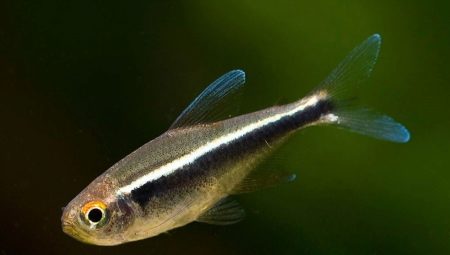Neons are very popular small aquarium fish. They belong to the class of radiant fish and belong to the haracin family. There are several types of neons that are separated by color: red, blue, green, black, gold. Black Neon (another name is Axelrod's Black Neon) is a peace-loving fish that loves to swim in flocks. Neon became the inhabitants of aquariums in Russia in 1963 and since then have been the favorites of both children and adults.
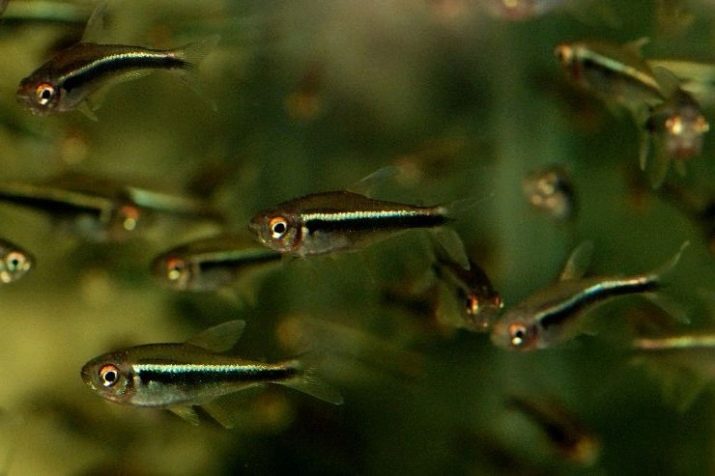
Natural habitat
Black neons are freshwater fish. In the wild, they live in South America. They can be found in Uruguay, in the Takuari river basin, as well as in fresh water bodies of countries such as Bolivia and Paraguay. Neons prefer places with a sluggish course, flooded forest areas, shallows.
Such water has a brownish color and is highly acidic, since organic matter is rapidly decomposed in it.

Appearance and Behavior
This type of neon has an elongated, flattened laterally body. Along it pass 2 stripes: the lower broad is painted in dark, almost black, and the upper narrow is in silver. The iris is red in the upper half due to the large number of capillaries, the mouth is small. Adipose fin black-green, the rest yellowish. The tail is divided into 2 transparent blades.
The body length of black neons in an aquarium reaches 3.5 cm in males and reaches 4 cm in females. The latter look much larger than elegant males. During the fight and during the breeding season, a shiny strip in males becomes noticeable on the tail. Black neons are nimble, shiny and vibrant.
They are friendly, mobile, always swim in a flock.
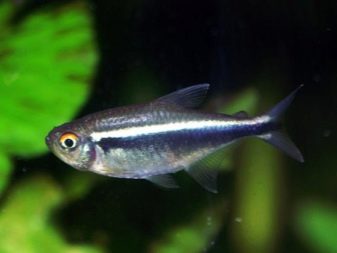

What should an aquarium be like?
In order for black neons to feel comfortable in a home aquarium, The following important points must be considered.
- Volume. It is calculated based on the fact that a couple of neons accounted for 15 liters of water. But since these fish are often kept in flocks of 7 or more, then about 70 liters of water are needed for such a number of fish. The aquarium should be covered from above after starting the fish, as black neons can easily jump out of it.
- Temperature condition. The recommended temperature for these fish is 20-24 degrees Celsius. From higher rates, black neons quickly age and live half less.
- The composition of the water. The water in the aquarium should have an acidity of 6-7.5 pH and a hardness of 6-10. A couple of times a month you need to replace 1/5 of the water with fresh. It is also necessary to purchase a well-made peat filter for the aquarium and take care of good aeration.
- Lighting. Black neons prefer not very bright upper light. The darker the inside of the aquarium, the brighter the color of the fish will be.
- Priming. Against the background of black soil with an opaque rear wall of the aquarium, a flock of these fish will look especially impressive. For the soil, sand or any other substrate is suitable, on top of which you can put a little boiled peat and dry leaves.
- Plants and decor. Black neons love the space overgrown with plants. It is recommended to plant Javanese moss, cryptocoryne, echinodorus. Ceramic pots, grottoes, small caves are suitable for bottom decoration.
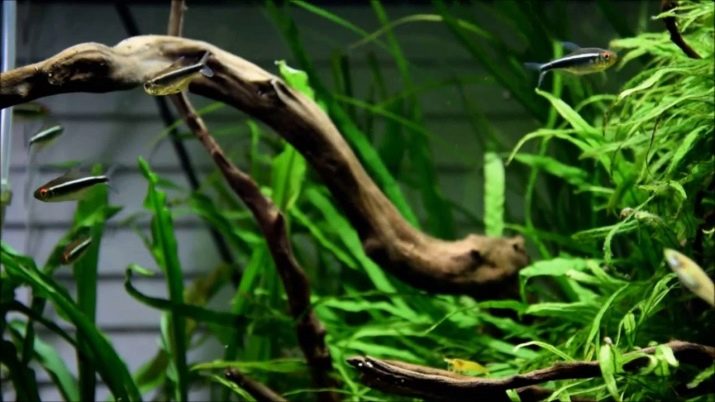
What to feed?
Under natural conditions, black neons feed on small crustaceans, insects, and mosquito larvae. At home, they are omnivorous fish, they can be fed live, high-quality dry and frozen feed. You can give bloodworms, tubule, artemia, for a more complete diet, you must include vegetables, frozen daphnia and cyclops in the diet. Food should be given in small portions.
It must be remembered that black neons have a small mouth, therefore, the feed should be well chopped. A characteristic feature of neons is also that they do not pick up food that has fallen to the bottom. The more varied the food, the more vivid the color of the fish will be.
In the wild, black neons can do without food for a month, so don’t worry if you forget to feed the fish.

Breeding
In order to breed black neons, you need to purchase an aquarium for spawning with a volume of 20-35 liters in the shape of a rectangle. Water in it should not be higher than 30 cm and have a temperature of 25-27 degrees. The aquarium must be thoroughly washed, darkened on the sides so that direct light does not get. Water for spawning should be settled, it can be treated with preparations against fungi or methylene blue.
At the age of 7 months, black neons are able to produce offspring. The best time of year for breeding these fish is spring or summer. It is not recommended to feed selected females with a large belly and males before spawning. 2-3 days after placement in the aquarium, spawning occurs, which lasts 1.5 -2 hours, the female swallows from 100 to 500 eggs. You should know that you can’t leave neon after spawning in the aquarium, as they can eat caviar.
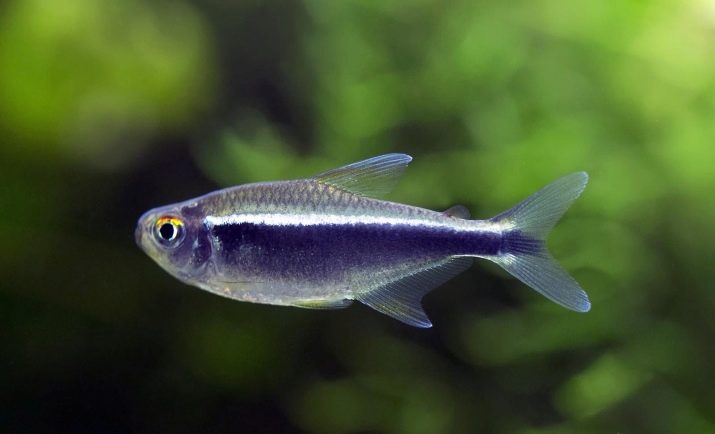
Baby Care
A day later, larvae emerge from the eggs, which at first are motionless and hang in the water. After 3 days, they begin to move, and they can already be fed little by little, ground into dust. Lighting should be added gradually. The fry are black neon gray with transverse dark stripes. The first 14 days they hide under the leaves.
Kids grow up very fast. After 2 weeks, both bands and eye color are already clearly pronounced. At the age of about 5 weeks, the fry look almost the same as adults. Fry can be launched into a common aquarium, in which you should increase the temperature by 1-2 degrees. If the strips of young neons fade, then this may be a sign of a deadly disease.
Such fish need to be caught immediately so that the rest of the young do not have time to get infected.
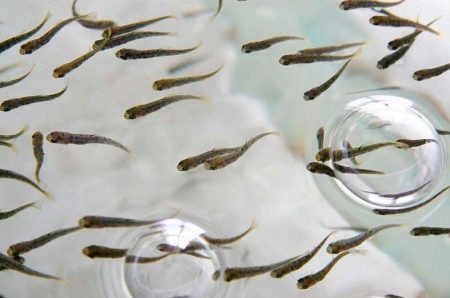
Compatibility
Black neons are suitable for keeping with any peaceful fish. They can not be kept with large fish, especially with predatory ones. For joint placement, viviparous cyprinids, zebrafish, rhodes, catfish corridors, gourami, dwarf cichlids, laliuses, guppies are ideal. Neons can seamlessly coexist with shrimp. Black neons are attractive and loving aquarium fish. Their maintenance does not require special skills, so they are suitable for beginner aquarists. Contemplation of a brilliant flock of black neons will certainly give you a lot of positive emotions.
About black neon, see the next video.
